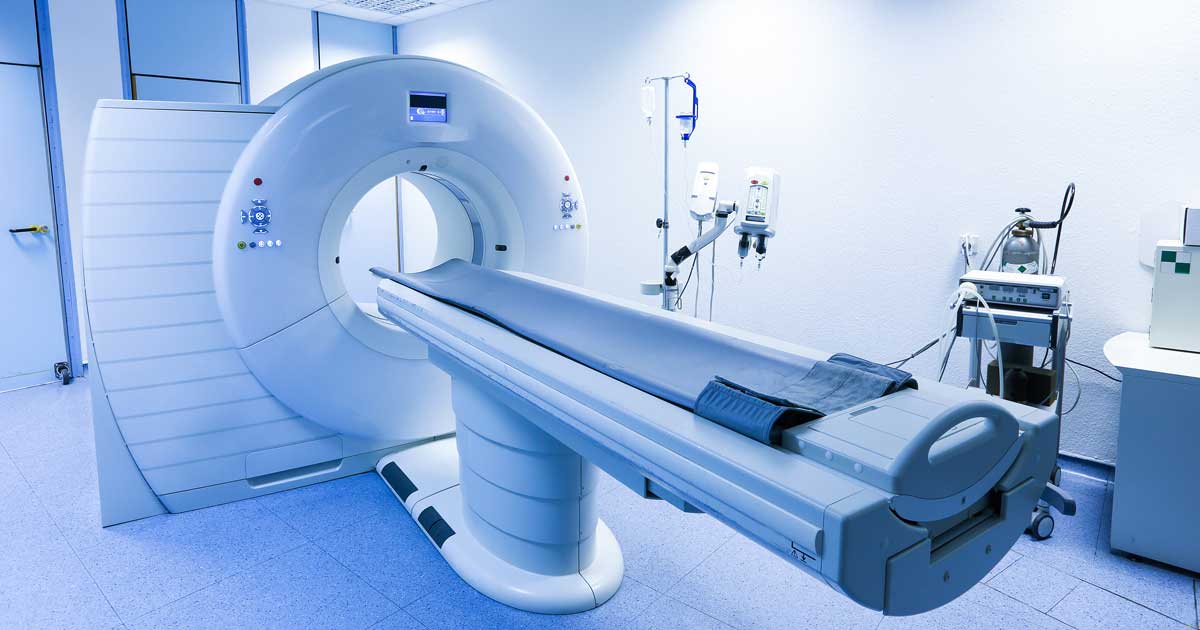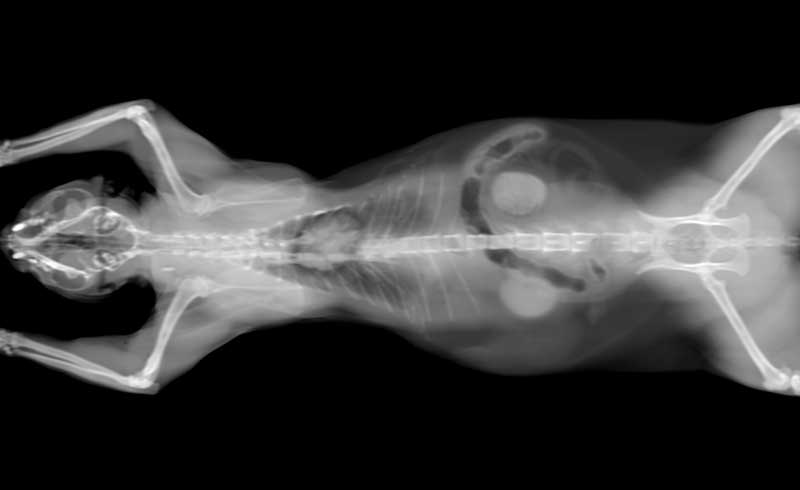
Modern multislice CT works quickly and precisely. This indispensable diagnostic instrument has brought veterinary medicine a long way, and has since taken diagnostics and treatment options to another level.
Depending on the indication, targeted slice images of the examined region are produced within a few seconds to minutes. These images open up an overlapping-free and very detailed view into various tissue and organ structures of the patient. Furthermore, it allows for a three-dimensional image representation through subsequent reconstructions.
The possibility of the variable focus on different body structures also enables an inside view into areas that are otherwise difficult to access diagnostically, such as the pelvis and structures of the head – including the nasal passages and brain.
Thanks to these detailed diagnostics, targeted therapy plans can then be created, and measures such as biopsies or surgeries can be performed immediately afterwards.
Significant benefits for veterinary practice
Among the benefits of CT to practice are:
- significant progress and improvement in diagnostics and therapy further treatment planning (for example, biopsies, surgical decision and surgical or therapeutic planning)
- avoidance of invasive procedures support prognostics (for example, preoperative metastasis screening)
- improvement in the management of the emergency patient by rapid assessment, directly impacting the decision for further measures
- additional confidence by the second opinion of a radiologist
- increase in patient volume due to expansion of service offerings
- optimal use of existing staff expertise
- fulfilment of increasing owner demand on diagnostics and therapy, and of client satisfaction and customer loyalty
- increasing overall reputation of the veterinary clinic or practice and retention of patients by avoiding referrals
Accordingly, the use of CT scanners is no longer limited to individual referral hospitals, but has long since become an established part of veterinary medicine.
The acquisition of a CT can be of great advantage for your practice or clinic. From our own experience, we recommend you carefully take your time to consider the purchase, because hasty, unexplored decisions could lead to unsuitable selections.

Before purchasing a CT
A CT scanner is a great investment into better diagnosis and treatment options, and lifts the general quality and reputation for each veterinary practice or clinic.
A practice would need to consider a few things before a purchase to avoid surprises. Not only do different models of CT scanners exist, but also other conditions – such as staff, time factors and total costs – ultimately determine whether the purchase pays off in the long term.
It may be worth investigating how close the nearest practice offering CT services is. This would influence the number of referral patients you would gain. Informal partnerships often develop between practices, with mutual benefit for all concerned.
Financials and time resources
Considerations and questions include:
- Which CT system fits into my practice?
- How much do suitable models cost, and can the practice afford to invest?
- What construction measures are necessary and can they be realised both financially and structurally?
- Measures such as installation, training and maintenance, as well as education and formation – and, if necessary, staff recruitment.
It should be noted available infrastructure and service offerings have a direct impact on choosing the right modality.
Staff and expertise
In relation to the practice team and individual professionals, considerations include:
- What is the personal or knowledge of CT?
- Does the team know the proper indications for CT scans and the limitations of the technology?
- Are members of the team familiar with protocols and proper positioning for CT scans?
- Is the staff trained for anaesthesia techniques to perform high-quality scans?
- Are vet professionals able to identify, and correct errors and artefacts during a CT scan?
- Are members of the team able to make decisions about the quality of the scan?
It should be borne in mind the quality of a CT scan has a significant impact on its diagnostic value.
Reporting
Questions to ask include:
- Do you have a radiologist on site, or do you plan to outsource the reporting to an external radiologist or a teleradiology provider?
- Do you already work together with an external radiologist or a provider to report on other modalities (for example, radiographs)?
Resources in teleradiology are limited, so you should ensure a provider is chosen in advance.
Return on investment
Practice owners should ask themselves what the minimum number of CT scans needed per month is to make the purchase worthwhile.
Vet practices should be meticulous when considering this factor, as it can distort the overall calculation or value of the modality, creating pressure on the team to perform unnecessary CT scans.
Therefore, the overall impact on a clinic as a unit should be considered, including:
- Is ideal use being made of the existing diagnostic infrastructure? Performing good radiographs should always be a top priority before a CT machine is bought.
- Does evidence exist of sufficient CT indications in-house or could the number of referral patients increase? Owners’ compliance to accept further diagnostics should also be considered.
- What does the practice want to achieve with providing CT scans beyond diagnostics? A CT scanner can have a tremendous impact on the overall reputation of the practice or clinic.
- What additional treatment and surgery options will result from the CT scans? Practices will need to make sure staff are prepared for the additional work volume.
To calculate the return on investment for a potential CT machine, you should consider the impact it will have on increasing the reputation of your practice as a high-level medical facility.

Leave a Reply